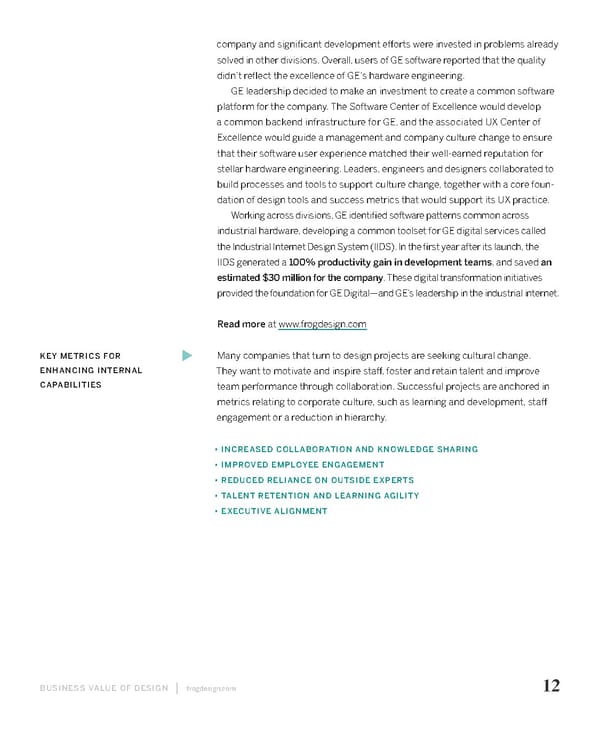company and significant development efforts were invested in problems already solved in other divisions. Overall, users of GE software reported that the quality didn’t reflect the excellence of GE’s hardware engineering. GE leadership decided to make an investment to create a common software platform for the company. The Software Center of Excellence would develop a common backend infrastructure for GE, and the associated UX Center of Excellence would guide a management and company culture change to ensure that their software user experience matched their well-earned reputation for stellar hardware engineering. Leaders, engineers and designers collaborated to build processes and tools to support culture change, together with a core foun- dation of design tools and success metrics that would support its UX practice. Working across divisions, GE identified software patterns common across industrial hardware, developing a common toolset for GE digital services called the Industrial Internet Design System (IIDS). In the first year after its launch, the IIDS generated a 100% productivity gain in development teams, and saved an estimated $30 million for the company. These digital transformation initiatives provided the foundation for GE Digital—and GE’s leadership in the industrial internet. Read more at www.frogdesign.com KEY METRICS FOR Many companies that turn to design projects are seeking cultural change. ENHANCING INTERNAL They want to motivate and inspire staff, foster and retain talent and improve CAPABILITIES team performance through collaboration. Successful projects are anchored in metrics relating to corporate culture, such as learning and development, staff engagement or a reduction in hierarchy. • INCREASED COLLABORATION AND KNOWLEDGE SHARING • IMPROVED EMPLOYEE ENGAGEMENT • REDUCED RELIANCE ON OUTSIDE EXPERTS • TALENT RETENTION AND LEARNING AGILITY • EXECUTIVE ALIGNMENT BUSINESS VALUE OF DESIGN frogdesign.com | 12
 The Business Value of Design Page 11 Page 13
The Business Value of Design Page 11 Page 13